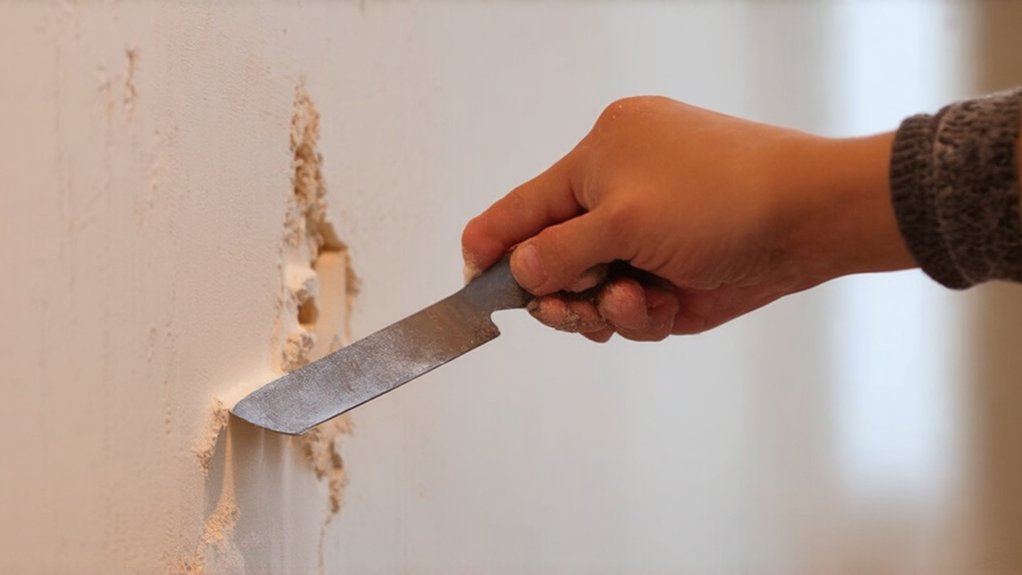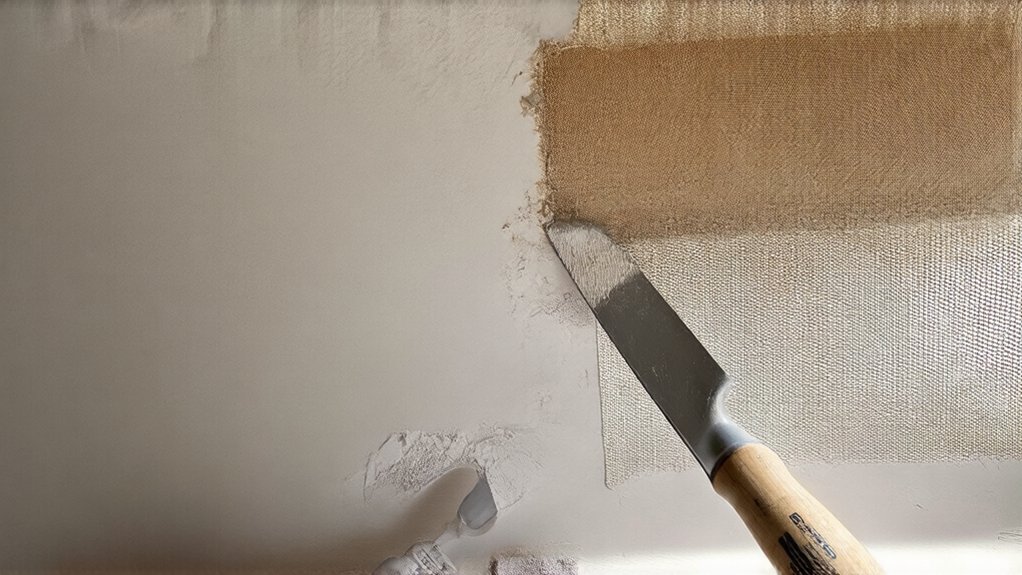You'll patch nail and screw holes more efficiently with the right methods. Prepare your surface, fill small holes with a blending compound, and patch large ones for a strong structure. Using the right fillers and smoothing techniques will help you achieve a professional-looking result. By following these steps, you'll be on your way to a flawless finish, and exploring further will reveal even more tips to get the job done.
Preparing the Surface
Because you're enthusiastic to fix those nail and screw holes, preparing the surface is a vital step. You're taking control, and that's great. Surface cleaning and surface preparation will help you achieve a smooth finish.
Clean the area thoroughly, removing dirt and debris. This guarantees a strong bond, reducing frustration later. Proper surface preparation is key to a successful repair, so take your time and do it right. It's a pivotal step towards a flawless result, and you're on the right track.
Residential drywall professionals in Erie recommend thorough surface preparation to ensure high-quality repair work.
Filling Small Holes
You're likely to encounter many small holes when repairing nail and screw holes, and filling them is a relatively straightforward process. You'll use a blending compound to fill the holes, then smooth it out. Professional drywall contractors recommend using high-density materials to ensure a durable and seamless repair. After it dries, you'll be priming surfaces for a fresh coat of paint, ensuring a seamless finish. This step helps you achieve a professional-looking result, and with the right techniques, you'll be able to fix those small holes with ease and confidence.
Patching Large Holes
Filling small holes is just the beginning – now it's time to tackle larger ones. You're covering larger holes, which can be challenging.
When fixing structural damage, it's crucial to address the issue promptly. You'll need to assess the hole's depth and width to determine the best approach. By taking the time to properly patch these holes, you'll be ensuring a strong and stable structure, giving you peace of mind and a sense of accomplishment, and belonging in your newly repaired space.
Using Different Types of Fillers
When tackling large holes, it's vital to choose the right filler for the job, as this will greatly impact the final result. You'll want to take into account joint compound application for a smooth finish.
A spackle mixture consistency that's not too thick or thin is essential. You're looking for a balance that will fill the hole without requiring multiple coats, making the process easier and less frustrating for you.
Smoothing and Sanding
Smoothing and sanding are vital steps in patching nail and screw holes, as they can make or break the final result. You're blending the edges, creating a seamless finish.
Finishing Touches
You're almost done with patching those nail and screw holes, and it's time to add the finishing touches. Consider:
- texture matching
- color coordination
- paint finish
- sheen to blend with your surface, ensuring a seamless look.
You're almost done with patching those nail and screw holes, and it's time to add the finishing touches. Consider texture matching, color coordination, paint finish, and sheen to blend with your surface, ensuring a seamless look.
Frequently Asked Questions
Can I Paint Over Filled Holes?
You can paint over filled holes, but you're matching filler color, and priming filled holes helps, so you'll get a smooth finish that makes you feel like it belongs.
How Long Does Filler Take to Dry?
You're wondering how long filler takes to dry, and it usually has a fast drying time, reaching ideal hardness within hours, so you can finish your project quickly and feel accomplished.
Are Fillers Safe for Outdoor Use?
You're looking for safety, and fillers with weather resistant formulations offer you long term durability, so you can feel secure using them outdoors.
Can I Use Caulk for Nail Holes?
You're considering caulk, but it's not ideal to fill nail holes, instead, you'll create a smooth filler surface using specialized fillers that you can sand and paint for a flawless finish.
Are Wood Fillers Eco-Friendly?
You're looking for eco-friendly options, and wood fillers now offer sustainable alternatives with environmentally conscious formulas, making you part of a community that cares about the planet.



